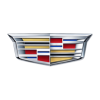Review: 2004 Cadillac CTS Trim
The 2004 Cadillac CTS has 1 trim. Below you will be able to review this trim in detail.
1 trim available









No content available


This vehicle has not yet been reviewed